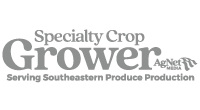By Maegan Beatty
On Feb. 18, Jude Grosser and Fred Gmitter hosted an online informational session on new citrus varieties and how to plant a profitable crop in the future. Both Grosser and Gmitter are part of the citrus improvement team at the University of Florida Institute of Food and Agricultural Sciences (UF/IFAS) Citrus Research and Education Center. Their main role is to research and test new citrus varieties against HLB and other diseases that harm the industry.
PROMISING PICKS
The researchers are testing varieties of oranges for juicing as well as grapefruit, limes and lemons for the fresh market. This past year at the annual Flavors of Florida event hosted by UF/IFAS, they provided juice samples from different varieties under study.
“We found that juice from the OLL-8 variety wins by majority vote,” Grosser said.
The citrus improvement team has produced many kinds of sweet orange varieties. Grosser says OLL-20 is an example of an orange that produces exceptional flavor. OLL-DC-3-36 and OLL-DC-3-40 are new varieties that both have enhanced HLB tolerance.

Hamlin N14-10 is a variety that Florida Citrus Mutual has requested to be released before Nov. 1so that it can be included in the next cycle of the Citrus Research and Field Trial program.
The 1850 orange hybrid is a favorite of the citrus improvement team. It is a new seedless triploid mandarin orange with a distinctive flavor.
ROOTSTOCK RESEARCH
The other half of the informational session talked through some key considerations for citrus rootstock selection, especially in an HLB environment.
“We have screened thousands and thousands of rootstock harvests in order to find the best strategy,” Grosser said.
The citrus improvement team is using conventional breeding and somatic hybridization to produce an effective citrus rootstock that offers wide adaptability, resistance to citrus blight, optimal tree size and HLB tolerance.
Grosser introduced a new strategy of breeding somatic hybrid rootstocks at the tetraploid level, creating “tetrazygs.”
“The use of allotetraploid somatic hybrid breeding parents allows the mixing of genes from three to four diploid rootstocks at once,” Grosser explained.
Plant species have previously thrived in the presence of pathogens by creating their own genetic diversity and by going through natural selection. According to Grosser, this process has been interrupted by man, meaning citriculture is approaching monoculture.
“Facilitated by biotechnology, citrus breeders have the opportunity to artificially reinstate this process by creating broad and unique genetic diversity from elite parents, followed by robust screening,” Grosser said.
He calls this new screening method “The Gauntlet.” This process includes crossing superior parents from the diploid and tetraploid levels, selection of robust seedlings based on growth rate, health and color as well as monitoring trees for HLB.
Maegan Beatty is a University of Florida student and AgNet Media intern.
Share this Post
Sponsored Content










